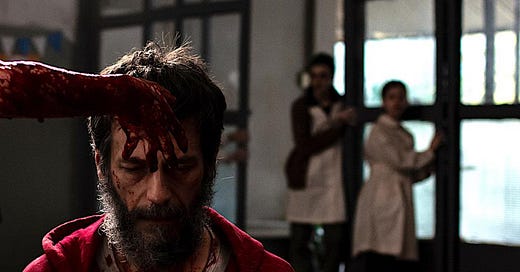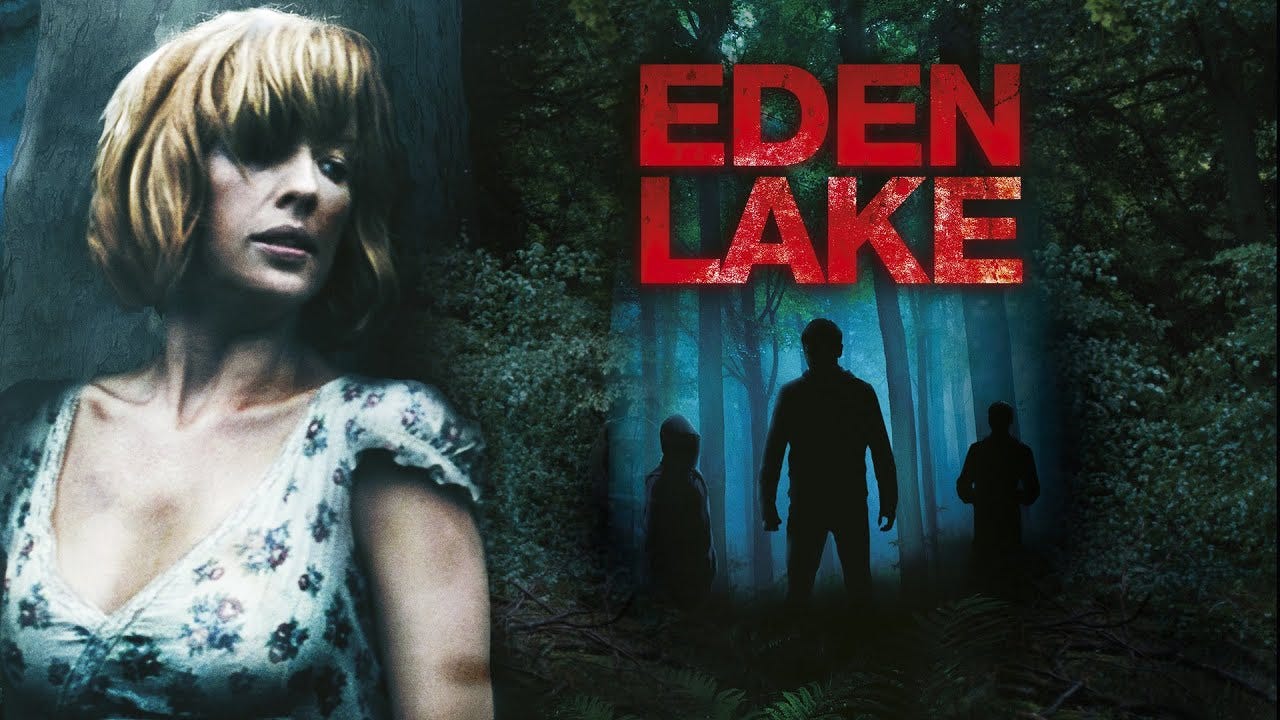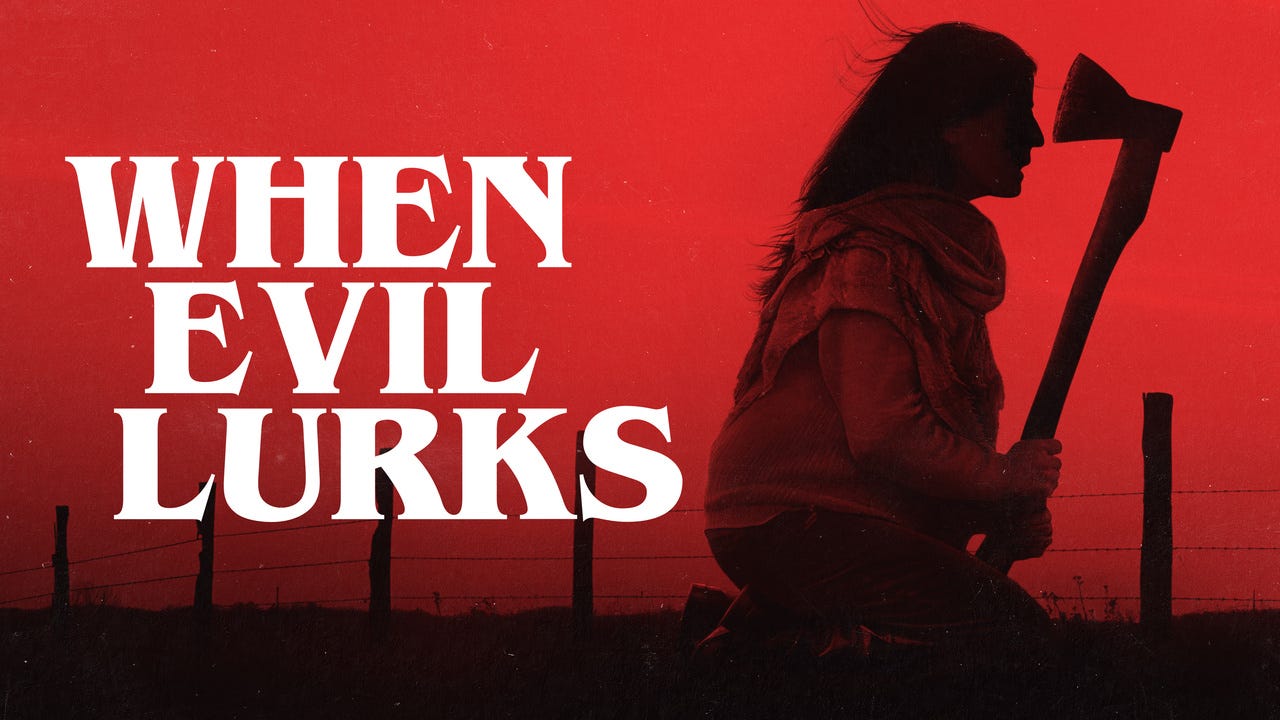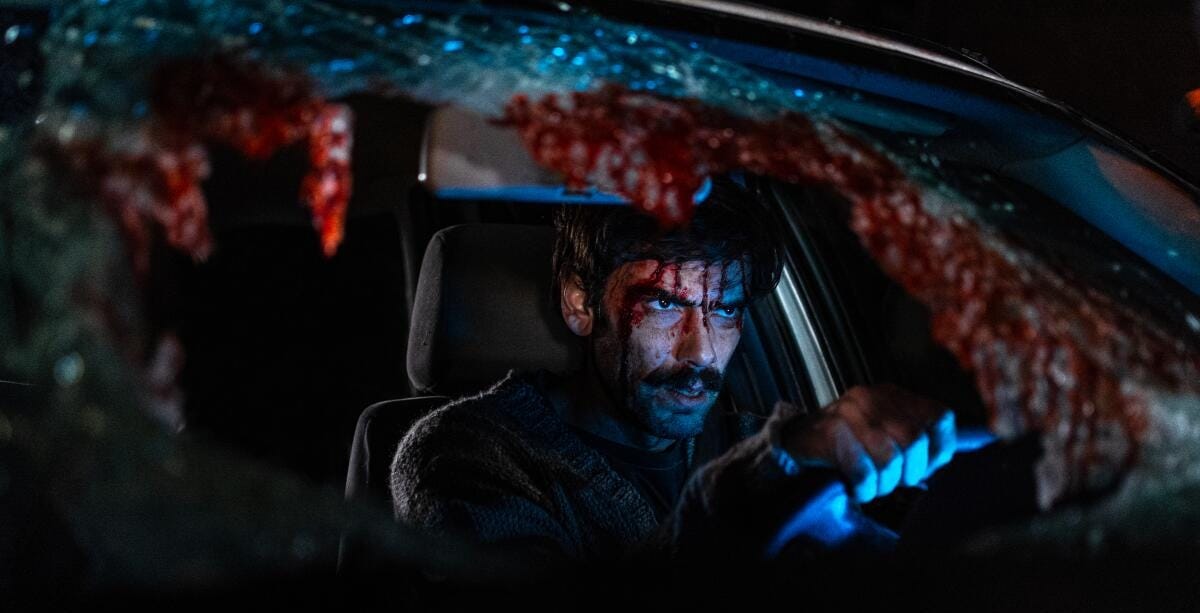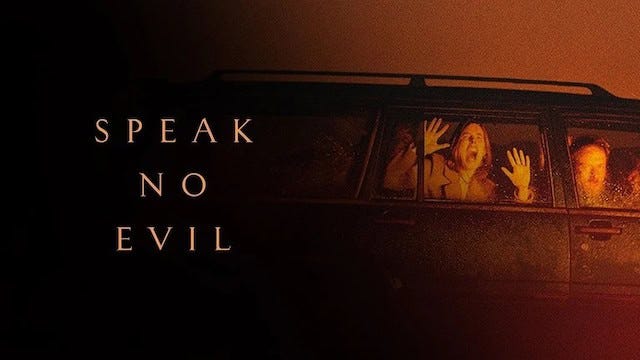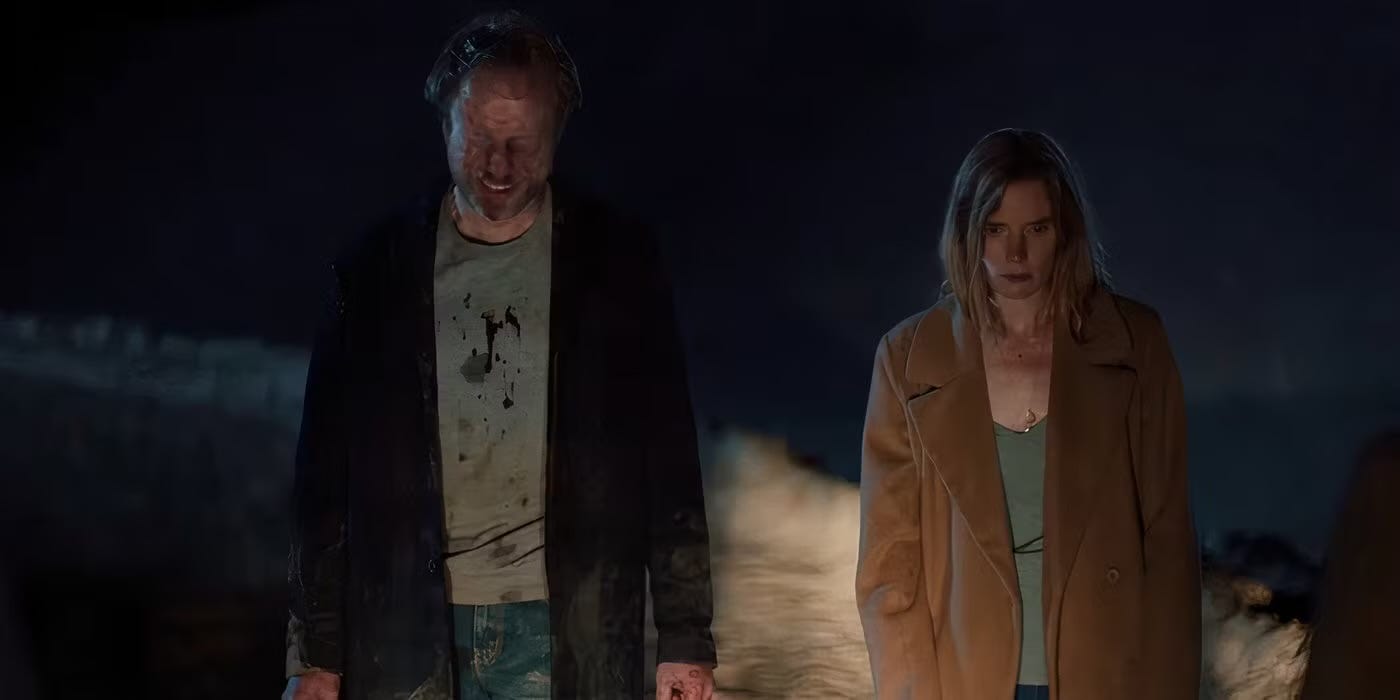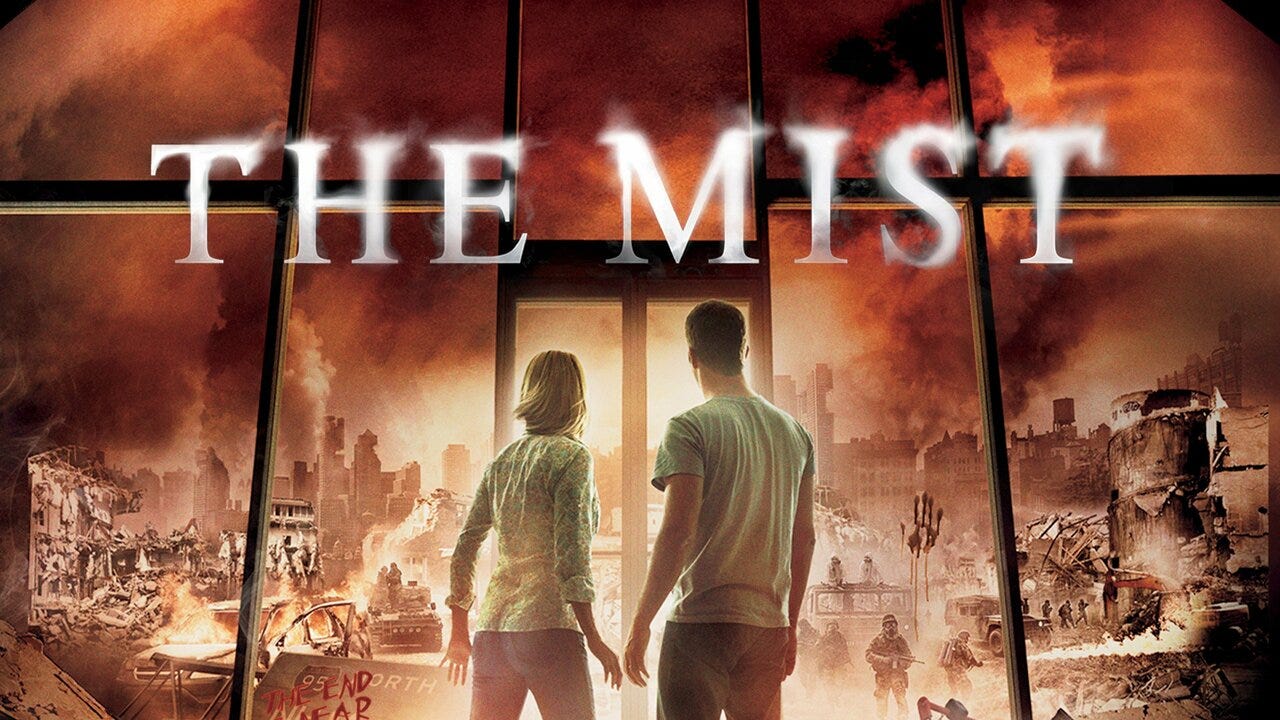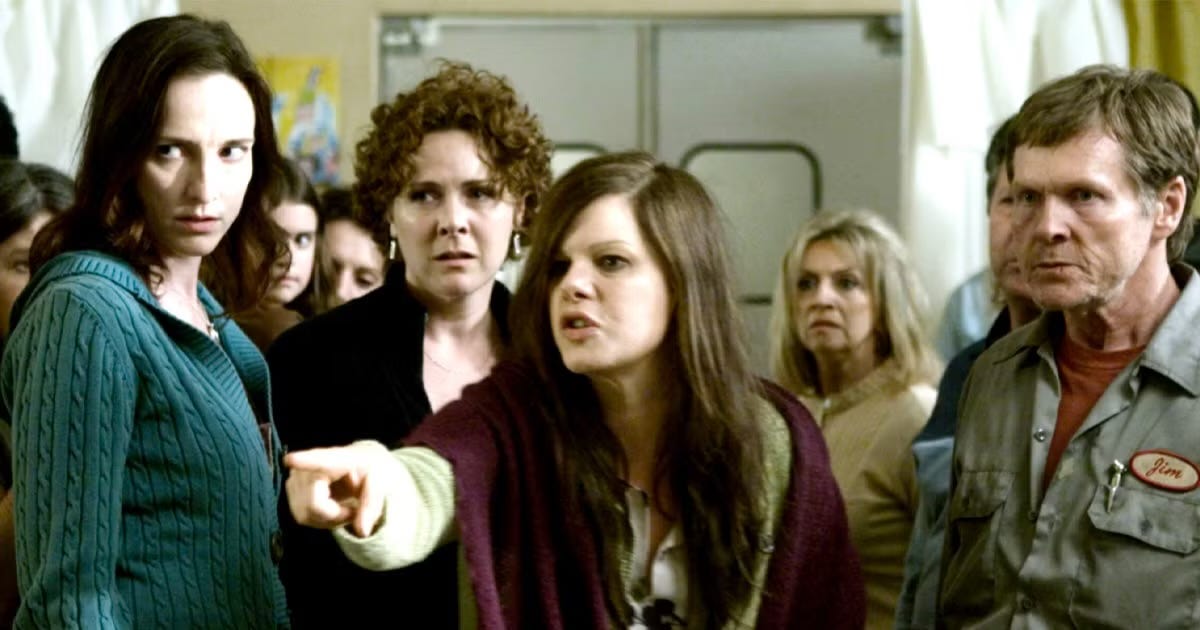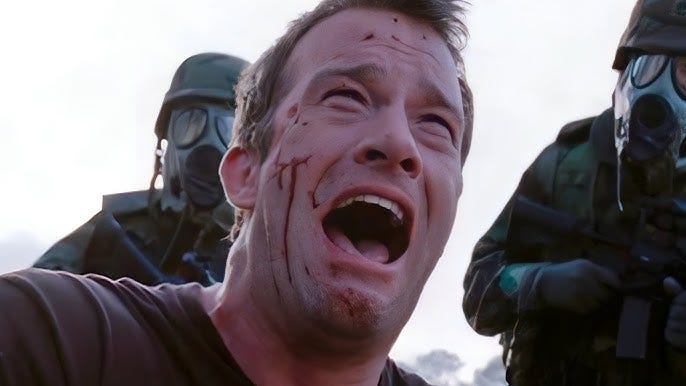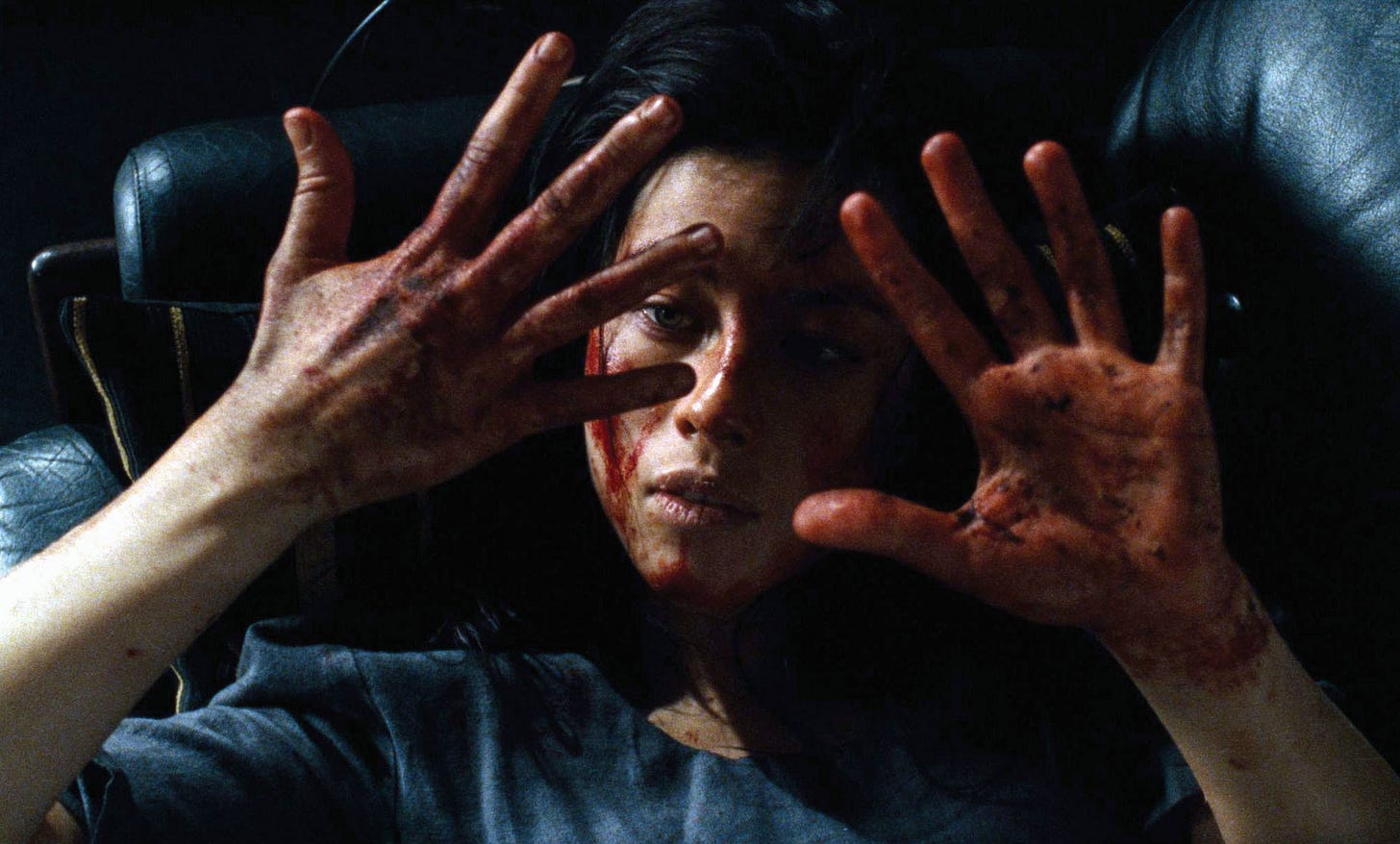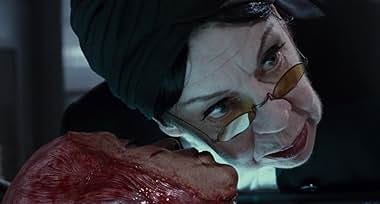5 Horror Movies with Shockingly Dark Endings
These bleak horror films don't just scare you - they'll leave you utterly shaken long after the credits roll.
It’s expected for horror movies to attempt to shock, scare, and disturb audiences. However, there are some movies that stick to your bones, leaving you thinking about the characters and their story long after you watch. Here are a few horror movies that leave their characters in a fate worse than death. This may go without saying, but while I won’t outright ruin the ending of the film for you, there are minor spoilers ahead necessary to the discussion of the films.
In This Article:
Eden Lake (2008)
When Evil Lurks (2023)
Speak No Evil (2022)
The Mist (2007)
Martyrs (2008)
Eden Lake (2008)
Eden Lake is a UK horror film starring Kelly Reilly (long before her Yellowstone claim to fame) and Michael Fassbender. The pair co-star as a couple, Jenny and Steve, who go to a remote lake for a romantic getaway. Jenny is an elementary school teacher, a detail that ends up playing into the central themes of the movie, but that’s a discussion for another time and article.
Their weekend is almost immediately disrupted by a group of wayward teens (and their less than pleasant dog) who arrive at the lake. Already looking for trouble and further instigated when our new friend Steve decides to confront them, the teens embark on a journey of stalking and torturing this couple for the rest of the film. Steve is critically injured by the group, so Jenny is left to flee through the woods on her own with the danger never far behind her.
Mother: “Not my kids...”
The movie is a pretty grim journey, and it’s one that may leave you frustrated by just how mean-spirited it is. As the situation becomes more desperate, you see Jenny forced embrace the same violence to try to win her own survival, begging the question of whether or not morality can survive when faced with fear and brutality.
You won’t be getting a happy ending, retribution, or even resolution for this couple and their story. Instead, the film drives its central themes home when you ultimately meet the family of these teens, showing you first-hand the true horror of the effects of generational trauma and how it comes full-circle to create new monsters.
When Evil Lurks (2023)
Demián Rugna is an Argentinian director who first entered my radar with Terrified (2017) — another fantastic film if you haven’t already seen it. His latest effort, When Evil Lurks (2023), takes his flair for brutality to new heights by framing evil as a truly cancerous entity that can — and will — spread.
We meet a pair of brothers encountering a man in their village possessed by a demon who is awaiting its physical birth. Demonic activity isn’t unknown to this area. In fact, they have a name for those possessed by it: the “Rotten”. Those in the village charged with keeping these demons in check are known as Cleaners, who must exorcise the demon without killing the host or the evil will be free to continue to spread. However, when the brothers arrive to the man’s house, they find the Cleaner is already dead.
Mierta: “Evil loves children. And children love evil.”
What’s interesting about this film is that you enter the movie almost under the assumption that you know what they know. The evil contaminating the village is so commonplace to their world that rather than ever directly explaining what’s happening or how it works, you move through the story with the characters as if you already know the rules and pick up the details through their dialogue and actions as you go. You’re a member of this village along for the ride. There’s so many ways that this type of storytelling could go wrong, but in this case, it saves the film from losing time (and pacing) to world-building and plot setup by integrating you directly into it full force.
With the Cleaner dead and no one coming to save them, the brothers are left to find a way to deal with the demon themselves. Fear and desperation lead to costly mistakes throughout the film that ultimately allow the demon to spread at a tragic (and extremely graphic) pace. In the end, this is a film where evil wins. We see the demon consume everything and everyone in its path and feel the inescapable nature of evil when left unchecked.
Speak No Evil (2022)
Before we dive into this one, a clarification is required. While I didn’t hate the 2024 American remake nearly as much as I’d expected to (dare I say, I actually enjoyed it), but in many ways it dampens down the story and ultimately veers entirely off the path of the themes of the original, resulting in a very different ending. So for the purposes of this discussion, we’re going to focus on the significantly more brutal ending of the original Danish film.
In Speak No Evil, Danish couple Bjørn and Louise, along with their young daughter Agnes, are on vacation in Italy where they meet a Dutch couple, Patrick and Karin. Patrick and Karin have a son, Abel, who is missing his tongue due to what the couple says is a birth defect. Patrick and Karin invite the Danish couple to visit them for the weekend at their countryside home, and Bjørn and Louise agree to make the trip. In the course of their visit, what starts as minor inconveniences and indiscretions slowly leads to graphic and violent consequences.
Bjørn: “Why are you doing this?”
Patrick: “Because you let me.”
There’s a large group of reviewers who saw this film as purely bad parenting, arguing Bjørn and Louise should have left long before the ending of the film and that no one would make the same decisions they did. However, I view this film as an extreme depiction of the “frog in the boiling water” analogy. You know the one — where the frog will immediately jump out of a pot of boiling water, but if you place it in cold water and slowly heat it up, the frog will ultimately stay and boil to death, unaware of the danger. How often do we let go of things because of the perceived obligation to be polite or amenable? How long can it continue before we cut it off or truly see the danger? And when we do, will we see it before its too late? As an audience, we have the advantage of perspective to the situation. We know what’s coming, maybe not in the literal sense, but we know that this is a horror movie that something dark will come to our screens. In their reality, Bjørn and Louise (or I imagine really anyone else meeting Patrick and Karin) could never conceive where their story would end.
If you want to stop your toxic habit of people pleasing (I’m not judging — I suffer the same affliction), this it your film. Bjørn and Louise essentially people-please their way to their graves, along with a very dark end for their young daughter. The ending of the film is bleak not only because of the graphic violence of it all, but also because it was so preventable along the way had they only seen the danger coming.
The Mist (2007)
If you were to ask me for creature features where the monster was actually humanity, you’d see both The Host (2006) and The Mist (2008) featured in what would become a very lengthy Ted Talk on the topic. It would probably end with you regretting ever asking me to begin with (I’m an introvert at heart, but I can be a yapper with the right motivation.) Luckily for everyone, we don’t have time for that here, so let’s just talk about ending of The Mist and why its so brutal.
The Mist is based on a novella by Stephen King, although it goes a different route with the ending, and if you’re a fan of his work you may notice many references to other King novels throughout the film. King has praised the film and its ending despite the slight change from its source material.
Amanda Dunfrey: “You don't have much faith in humanity, do you?”
Dan Miller: “None, whatsoever.”
Amanda Dunfrey: “I can't accept that. People are basically good; decent. My god, David, we're a civilized society.”
David Drayton: “Sure, as long as the machines are working and you can dial 911. But you take those things away, you throw people in the dark, you scare the shit out of them - no more rules.”
The film starts with a severe thunderstorm that hits a small town in Maine, damaging the lakeside home of the Drayton family. David Drayton and his son Billy leave to go into town for supplies the next morning as a thick fog creeps into the area. Ultimately, they become trapped in a grocery store with a group of other locals, as the mist descends over the town and brings with it the threat of a giant monster outside the doors.
Over time the movie morphs into a story less about the creatures outside and more about the people trapped in the store. One group is loosely led by David who want to figure out how to stage their escape, and the other follows Mrs. Carmody, a deeply religious woman who believes that the monster arrived due to their misdeeds and requires a sacrifice to save them. The rising tension between these 2 groups escalates to violence as the film goes on.
At another time (and article), I’d love to dive into the different theories behind the ending and how it relates to the conflict between these 2 groups, but that will require more heavy spoilers. So we’ll just say its tragic no matter how you slice it. David and his son ultimately escape just to meet a horrific end to their story that feels so shocking and unfair after everything they go through. You’re left feeling empty and wishing these people had just held on to hope for a little bit longer.
Martyrs (2008)
If you missed it in the intro, this article is part of a 4-part series of bleak film recommendations, and it feels appropriate to lead with Martyrs — partially because it’s one of the most well-known French horror films and partially because I’ll talk about it every chance I get.
It’s about a woman Lucie, who was abducted as a child and suffered significant child abuse at the hands of her captors. After escaping, she finds herself at an orphanage where she befriends another little girl named Anna.
Mademoiselle: “Lucie was only a victim. Like all the others. It's so easy to create a victim, young lady, so easy. You lock someone in a dark room. They begin to suffer. You feed that suffering. Methodically, systematically and coldly. And make it last. Your subject goes through a number of states. After a while, their trauma; that small, easily opened crack, makes them see things that don't exist.”
Years later as an adult and still experiencing the trauma of her childhood, Lucie is convinced she has finally tracked down the people responsible for her abuse, enlisting Anna for help to get revenge and hopefully closure. Unfortunately, Lucie doesn’t get the redemption she’s hoping for and Anna is ultimately left alone to relive the same trauma her friend experienced as a child.
Even in the end, this movie refuses to hold your hand as it leads you through its brutality. The final scenes are left ambiguous, but also bleak in nearly any way you choose to interpret them. It’s another film I could happily give a 30 minute Ted Talk on with very little advance prep time. The ending leaves a significant amount of room for interpretation and will leave you wondering for long after what the point of it all was, or if there even really was one, and what all that says about the people involved.
As a disclaimer, make sure you watch the original 2008 French film over the nearly insultingly inferior 2015 American remake. I know some movie lovers don’t care for subtitles, and that’s a fair preference to have, but I’d genuinely almost rather you just not watch it at all over watching the remake.
That’s all for today, but I have 15 more disturbing, dark horror movie endings to go! Subscribe now for free so you don’t miss the next post!
Want to support my work, but not ready to become a monthly paid subscriber yet? I always appreciate any small donations so I can continue to bring you more horror movie content to love! Click the button below to make a small (and very much appreciated) donation to my coffee and movie fund!

